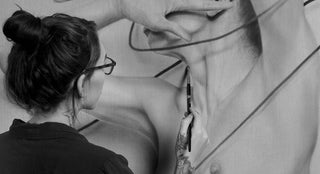During the past couple years in Art World, it has become a fairly trendy thing for galleries to put on exhibitions featuring an all female roster. One might look at it as a nice gesture, but there are always two sides to a story. There are plenty of all male exhibitions that aren’t promoted as an“All Male Exhibition,” so why do we as a creative community decide to push and promote the female group show as something rare? Just the very act of promoting it this way takes away the equality these shows are trying to give the women in them. Do galleries feel there is a need for these shows in the community and that they are filling a void? Is it just a marketing technique? If we work with women equally, we shouldn’t feel the need to holler about a show we do with all females.
San Francisco curator, Rachel Ralph, decided to host an all female exhibition but focused on her curation and concept more than the fact that it was all females. The concept is a female issue, that of the out-dated medical “condition” given to women of the past—hysteria—and its lingering impacts on today’s women of the world. What we have is a show with purpose that speaks on a specific topic relevant to women—without exploiting the women in the exhibition through hype. And a few of the artists in the show like Kate Klingbeil, Lauren YS, and Erin Riley have all been featured on The Hundreds blog previously.

Tonight at 7pm is the closing reception/guided artists tour at Athen B. Gallery in Downtown Oakland with local artists Nicomi Nix Turner, Lauren YS, Meryl Pataky, Ileana Tejada, Kate Klingbeil and curator, Rachel Ralph. For this year’s 4%ers group exhibition, the topic at hand was ‘Hysteria,’ in relation to Hippocrates’s assertion that it explained all maladies experienced by women and stemmed from the womb.
We caught up with a handful of the artists from this years 4%ers group exhibition like Erin M. Riley, Ileana Tejada, Kit King, Winnie Truong, Meryl Pataky, and Nicomi Nix Turner to get some more insight into who they are and the work they made for the exhibition. We do ask some gender based questions here and there when relevant. Be sure to check out the group interview below—you might just learn something.
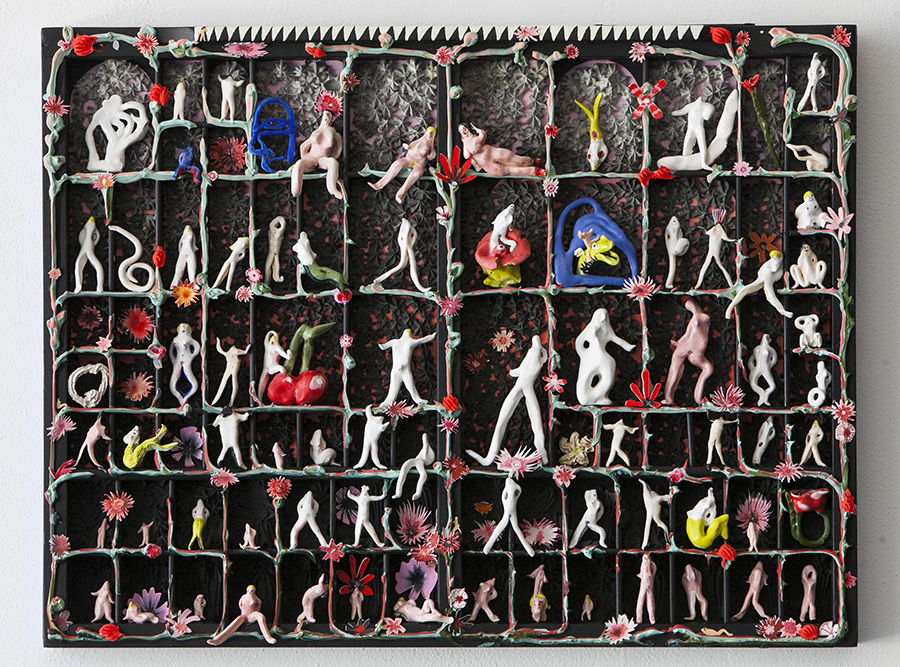
Rachel Ralph, curator for 4%
Brock Brake: What sparked the initial idea for the 4%ers exhibition?
Rachel Ralph: The show stemmed from my realization that the majority of my programming at FFDG was with male artists. I wanted to correct this disparity while also trying to not undermine the validity of any artist, no matter their gender. I sought out the history of women being excluded from the exhibition space and found the stats unearthed by the Guerilla Girls (a feminist activist artist group working in NYC in the ’80s) used to determine the 4%ER title. I thought the best way to correct the unbalance was to devote 100% of my walls to work created by women.

How did the exhibition change from last year?
Rachel Ralph: Last year, I chose artists who had a history with the gallery or frankly who I was just really into. It ended up being a good show but I felt more conceptual cohesion could draw more insight from the work. There was no distinct concept and I felt it did a disservice to the show itself. To change that, this year I thought about ways to bring insight into some aspect of womanhood to only realize how problematic it was to nail down any characteristic and deem it as gendered in any way. I remembered learning about the concept of hysteria and thought it was equally problematic so I decided to use it as a way to highlight this shaky terrain. It ended up being a way to find new artists, draw interesting connections, and brought together a different group of artists I was thrilled to work with.

How does it make you feel when you see other curators labeling their all-female group exhibitions as “Female Group Show” instead of just promoting it as an exhibition?
Rachel Ralph: It’s pretty simple. I’ve never seen any shows labeled “all male group show” (except the Black Mail show curated by Ace who also sought to correct an imbalance in the art world which I thought was great!) so why should we say it’s all women? It insinuates that these artists were chosen for their gender, not their work, which is the exact problem I’m seeking to fix and is just not the case for this show. This work is amazing no matter who created it. And to be totally honest, a male artist has been in the show both years. It wasn’t intentional but if I had excluded these artists, I would have fallen into the same traps I’m trying to eliminate. I’m trying to show gender doesn’t determine the quality of work while also untangling our preconceived notions of why it should.
Erin Riley
Brock Brake: How does the history of your medium and process contribute to the work you make, if at all? How was this craft passed down to you—how did you learn?
Erin Riley: I learned to weave tapestry in college in Boston, MA. I had been interested in painting but found that tapestry challenged me to concentrate on composition and the importance of every detail. In the beginning, tapestry is so difficult that simple shapes can take days/weeks so every extra detail has to be certain. I think being forced to simplify allowed me to really think about content and color in ways that painting wasn’t allowing me. I acknowledge and respect the lineage of tapestry but that does not affect what I chose to depict.
You aim to provoke in your work, correct? Could you touch on some of your intentions?
Erin Riley: The group exhibition 4%ers had the curatorial theme “hysteria” and dick pics are things that often cause hysteria in both the positive and the negative. My work is intended to open up a dialogue, but it’s not intended to provoke or simply shock viewers into looking. I bleached the dick pics at Athen B. Gallery for that reason. I wanted to subdue the initial image so that it is not as aggressive or illicit as it once was and to calmly allow viewers to see and process an image without an instant visceral reaction. Nudity is often biased by gut reactions to modesty and social norms. I’m trying to present images from my sexual past and present in a frank and open way so that viewers can feel themselves processing bias and perception.
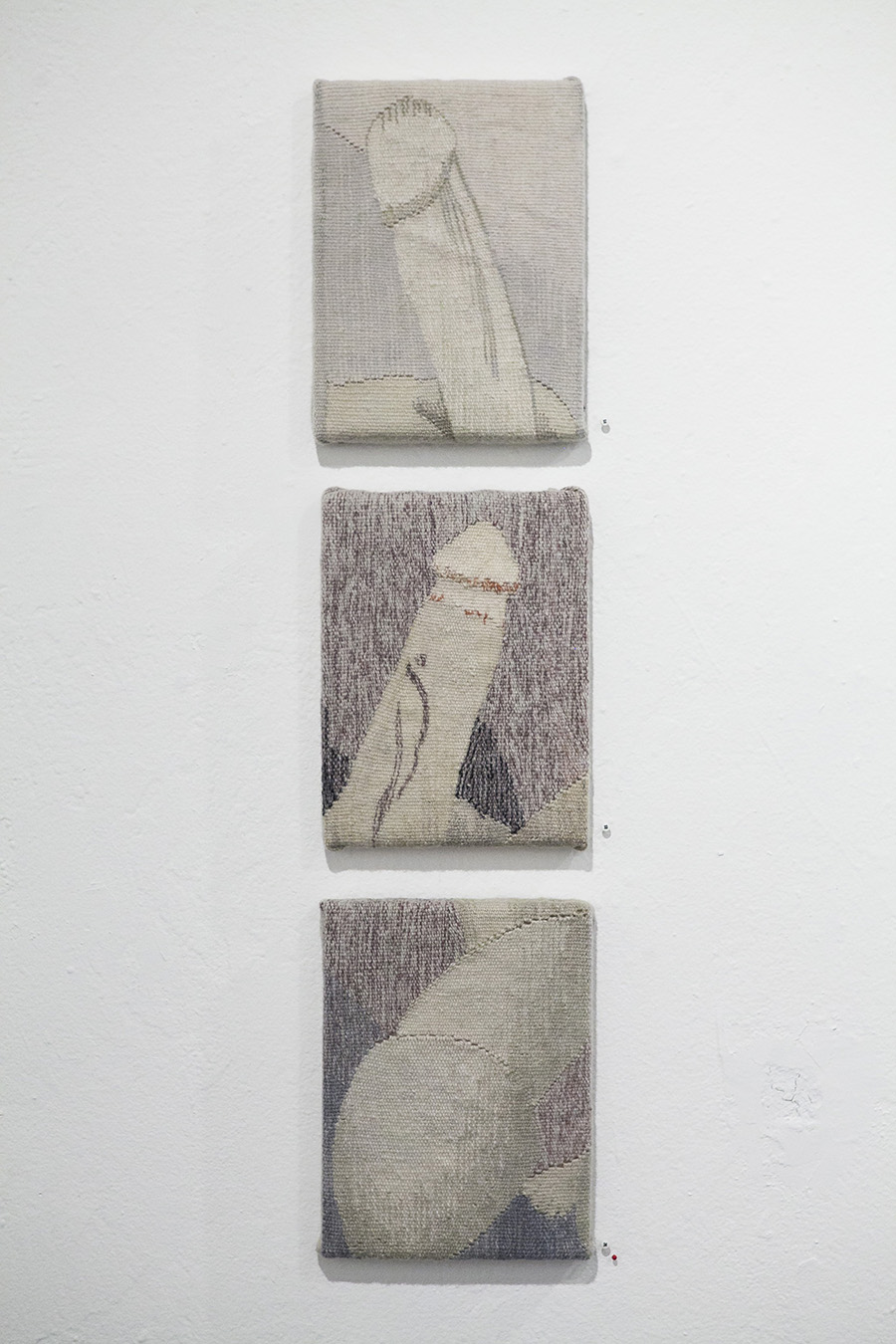
Car crashes, porn, selfies, drugs, guns, vibrators, and still lifes have all been represented in your work. Where do you see yourself focusing your attention next?
Erin Riley: I am currently working on self-portrait still lifes, depicting objects and developing a narrative with “things” and images. I’m working big (8ft x 8ft) thinking a lot about love, death and sex. I’m hoping to get a little bit deeper into the things that change how we interact with the world—childhood trauma, memories, etc.
Ileana Tejada
Brock Brake: You choose to make yourself the subject of your portraits frequently. Why is this?
Ileana Tejada: It’s my story and it’s the only way that I know how to tell it. I’m not pretending to be these characters that I’m representing—they’re all a part of who I really am and what I’ve experienced in life. It’s all one long narrative and I don’t feel it’s appropriate to use anyone else.
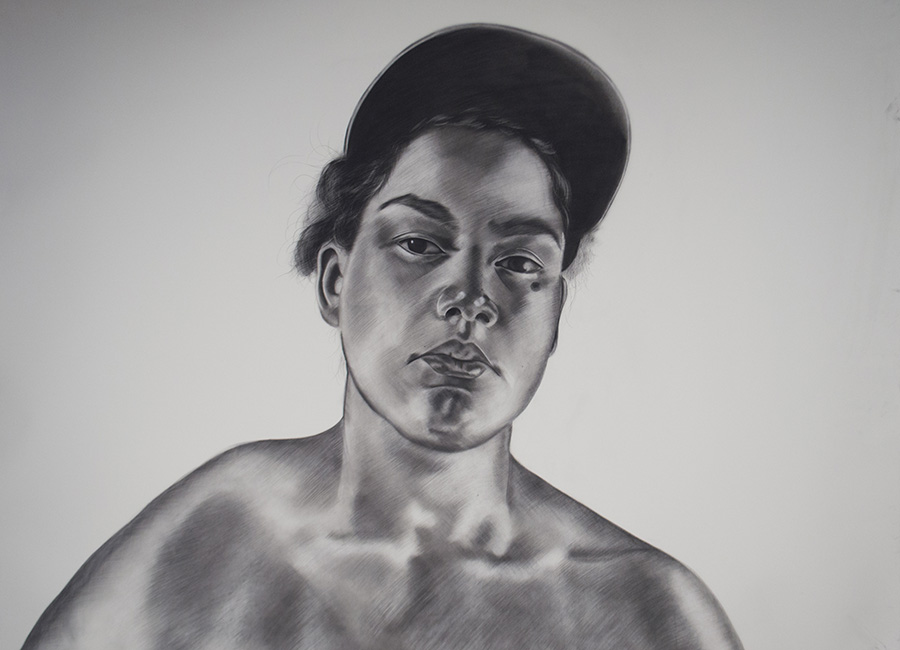
What made you decide to work in the epically large scale that you do?
Ileana Tejada: Half a year leading up to the MFA show I ordered this 72″ by 20 yard roll of paper from New York. For the first three months or so it was just sitting in my studio. I didn’t know what to really do with it; I’ve never done a drawing larger than 22×30 inches. It was during that time I started reading Relentless by Tim S. Grover, a trainer that’s worked with athletes such as Kobe Bryant, Michael Jordan, and Dwayne Wade. Some people think it’s stupid, but I read that book for the third time in my life at this point and had covered most of my studio with all these quotes from this book and many other sports psychology books I had read. It gave me the motivation that I needed at that time to make things happen.
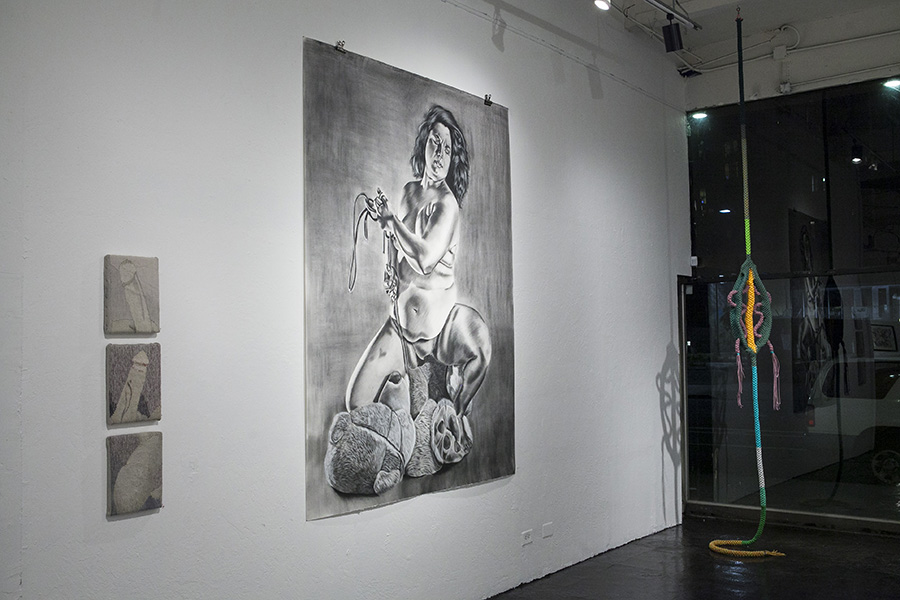
It was 3 months until our MFA show and [I] had little work that I was happy with. I knew I had to unroll that roll of paper and just try to see what I could do at a large scale. The smaller work wasn’t working—it was too contained in a small space and would need to be framed to make it complete. So I decided to just go for it. I shocked myself with what happened next. I was a machine. After two months, I had six large drawings, and they felt complete. Unlike the smaller work, the bodies were allowed to take over an entire wall space. It was so clutch to pull that off.
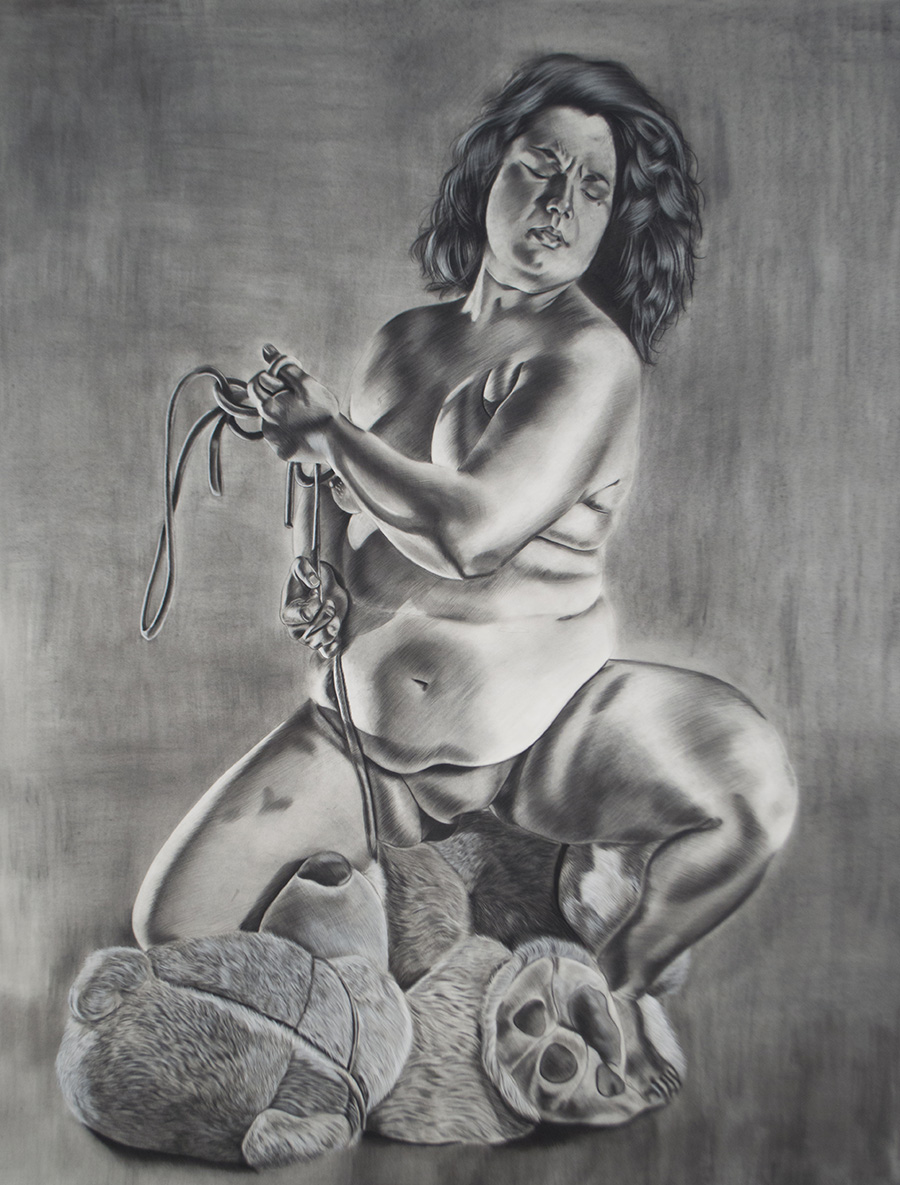
Kit King
Brock Brake: Your work is frequently censored on social media. Do censorships like these affect you and the work you make? Does it fuel you?
Kit King: Oh of course. It’s obviously frustrating. And my art is completely fueled by my emotions. So I’m finding the more my work is censored, the more I want to paint art that provokes censorship. I actually have been tossing around ideas for a couple pieces that surround censorship for my solo next year at Athen B; there may or may not be an assemblage of nipples—a compilation of all the nipples that will no doubt be censored out for the social media posts that will lead up to the show [laughs]. But in all seriousness, the ruffled social media feathers have got me pondering things, such as, if I was to paint a male nude, would it be as quickly removed? Or is it just the female form that’s meant to be shamed and censored?
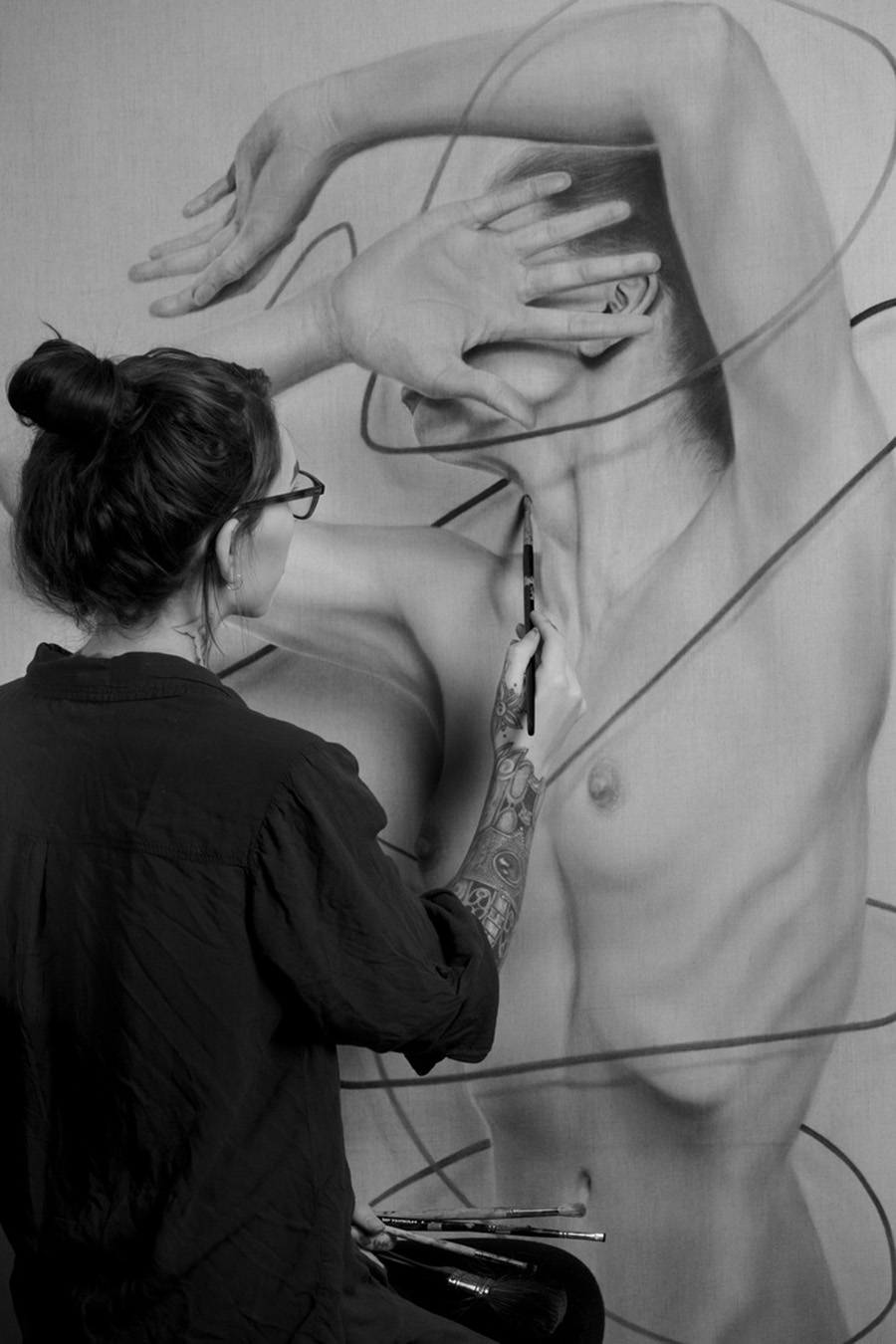
When did you first pick up the brush and at what point did you realize you could make a living just off your work?
Kit King: My mother tells me I was painting before I could even hold a brush. Possibly too much information right here, but she likes to remind me every so often that she knew I was born to be an artist when, as a baby, I started taking the poop out of my diaper and painting the walls with it [laughs]. Of course I don’t remember this, so it could just be an awful fictitious tale she likes to tell folks in an effort to embarrass me. But I do remember my parents letting me draw and paint all over the walls, with real art supplies, when I was just a wee one. Folks would tell my mother it was poor parenting. She said walls could be painted over, that it was more important to embrace and nurture your child’s creativity.
As for making a living off of it, I would doodle in my binders in class all day long in high school. My peers would ask me to draw them things, and if they could get them tattooed. It wasn’t long until I started selling flash out of my locker at school. One of my first jobs, also in high school, was as a face painter. As a teen I was hired to paint murals, and would sell random drawings and paintings. But even as art paid the way through my teenage years, I never [saw] it as a viable career path.
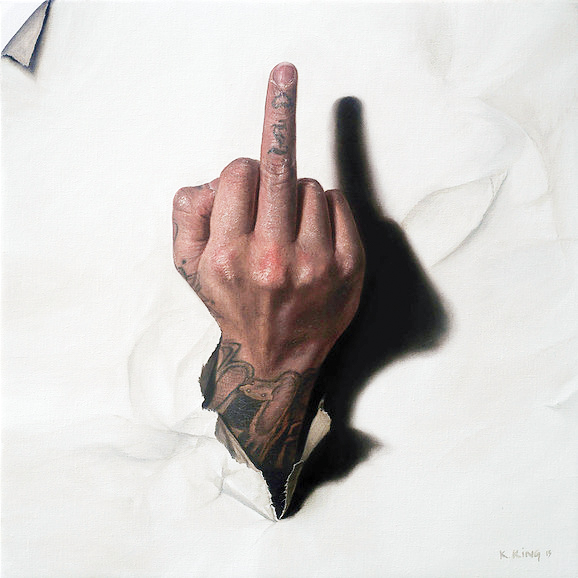
I happened to fall into a tattoo apprenticeship before I graduated high school; it was meant to be temporary while I saved up funds for secondary schooling so I could “get a real job”… But I wound up tattooing for seven years. During those years, I sold a ton of drawings and paintings, but it still never hit me that I could make a living off just my artwork. It wasn’t until I fell very ill, and had to stop tattooing, and turned into a massive recluse, couldn’t leave my home, couldn’t see people, that I slowly started to see that living off my art alone could be a reality. I was in a rough place and threw myself into art for a reprieve. The more I dove into it, the more of a response there was to my art… It wasn’t until about two years into making a living off my art alone, that it hit me—”Whoa! I’m an artist! I’m doing it.” Once I [saw] that it was possible, there was no plan B… This was it. My ma was right—this is what I was born to do. I couldn’t imagine it any other way.
Meryl Pataky
Brock Brake: Is it true that as a neon maker, you work in a predominately male industry? Do you consider yourself an equal?
Meryl Pataky: Yes, I do work in an industry with mostly older white males. There are plenty of talented women out there as well. Do I feel like an equal? Not really but it’s not because I’m a woman. It’s because I’m still working on my first decade of experience and most people, even the women I know, have double that on me.
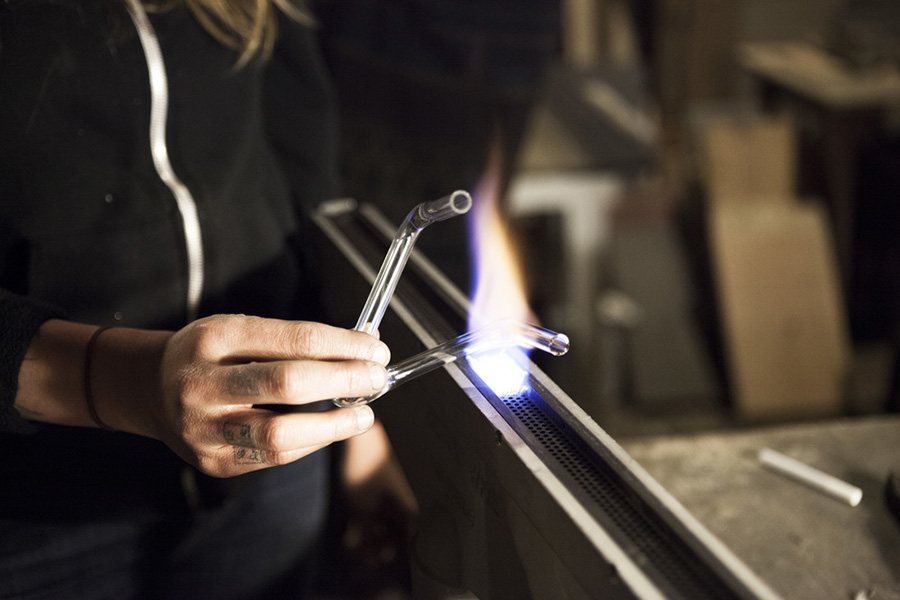
When you post process videos on social media, men feel the need to comment on your use of the high powered equipment and your safety using the tools, even though you’ve been using a lot of the equipment for close to 10 years. How does this make you feel to have peers responding in such a way?
Meryl Pataky: It’s just like… really? It’s offensive, absolutely. I have this equipment in my studio, I obviously know how to process my tubes which requires a lot of dangerous current. The videos show that I know what I’m doing yet they still feel the need to assert their knowledge and ego over me in almost every video and say “Don’t shock yourself! That’s super dangerous!” or “Get a Jacobs ladder on your bombarder so you don’t shock yourself!”… One of my mentors always asks if I mind if he gives me advice before telling me, which I think is very sweet and respectful of my feelings being a woman in a man’s world. Bottom line though, it’s really not a gender thing or a “sex issue”—it’s a respect thing. Just deflate your ego a bit.
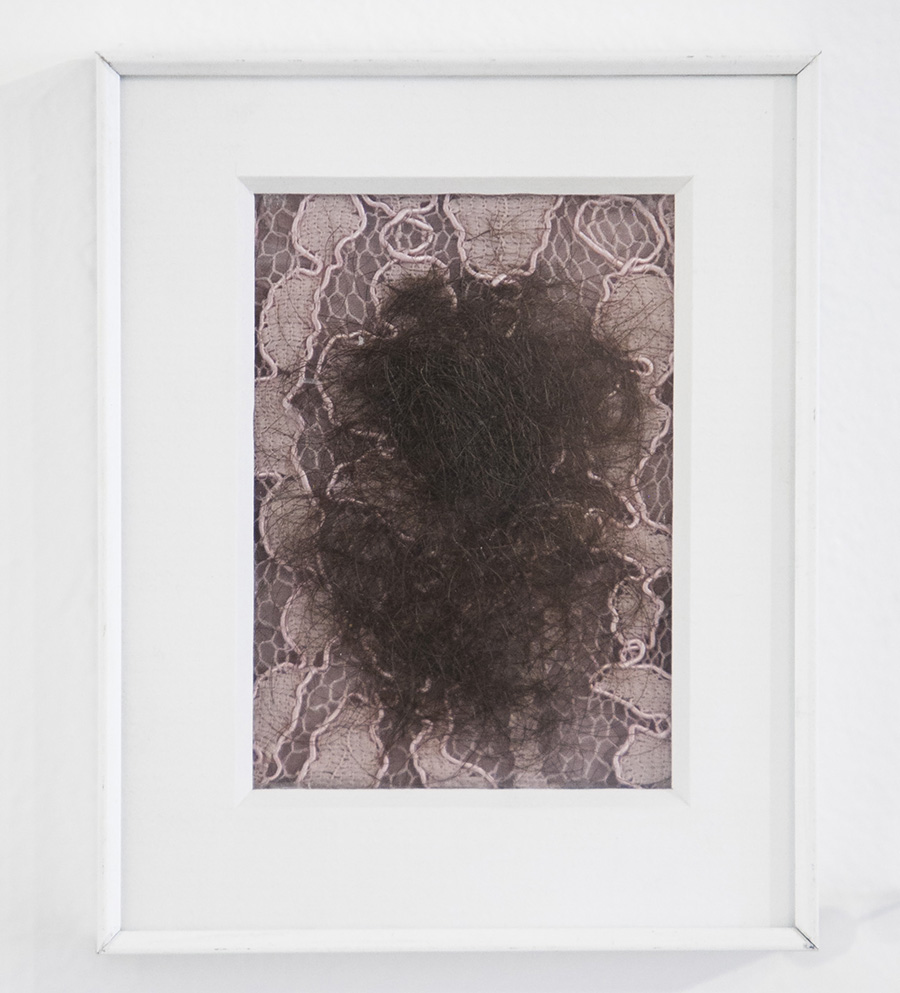
Any advice to people trying to get into a serious trade as a profession?
Meryl Pataky: All trade industries have masters and a long history of apprentice and mentor relationships where the trade has been passed along. Find yourself a teacher or mentor that can guide you in the right direction. It’s great to be self taught, but mentors are a resource where you can learn from other people’s mistakes before making them yourself. Also, most trades, especially mine, are a huge investment both financially and time wise.
Be patient—you probably won’t have everything all at once in terms of the equipment, but you can get started on the minimum and build up. I started in my shop with just one burner and the bare minimum and managed to work closely with my mentors, taking jobs until I could build more for myself in my shop. After 5 years of working, I managed to build a full shop and can make a piece from start to finish on my own… It was a lot of work and brutal but I totally did it. You can do anything you set your mind to.
Nicomi Nix Turner
Brock Brake: You combine many elements into each piece yet keep your aesthetic clean and breathable by using delicate gray scale. Can you talk about the tedious nature of your rendering and shading? We are also interested in how you choose what things—mushrooms, cows, flowers—appear in which pieces. Is there symbolism in these elements?
Nicomi Nix Turner: The layering in my works is sort of a balance between masochism and obsession, building from an almost invisible layer to the darkest shade. It takes longer than I would wanna admit, but it comes out looking like how I intended, for the most part. I guess often I’m trying to make it feel like a bit of a memory or deep thought—a little fuzzy around the edges, things in suspension and blinding white light.
Most of the elements in my work symbolize a great deal more than you would give them credit at first. I’ve done a lot of studying into Gnostic principles and metaphysics over the years and marry a lot of the visual cues into my works. I like the idea that there is an underlying—an occult or hidden—meaning in the stories I try to create. Keeping it gray scale allows me to feel like I can do that to an extent that the viewer can fill the voids of each story and create their own meaning.
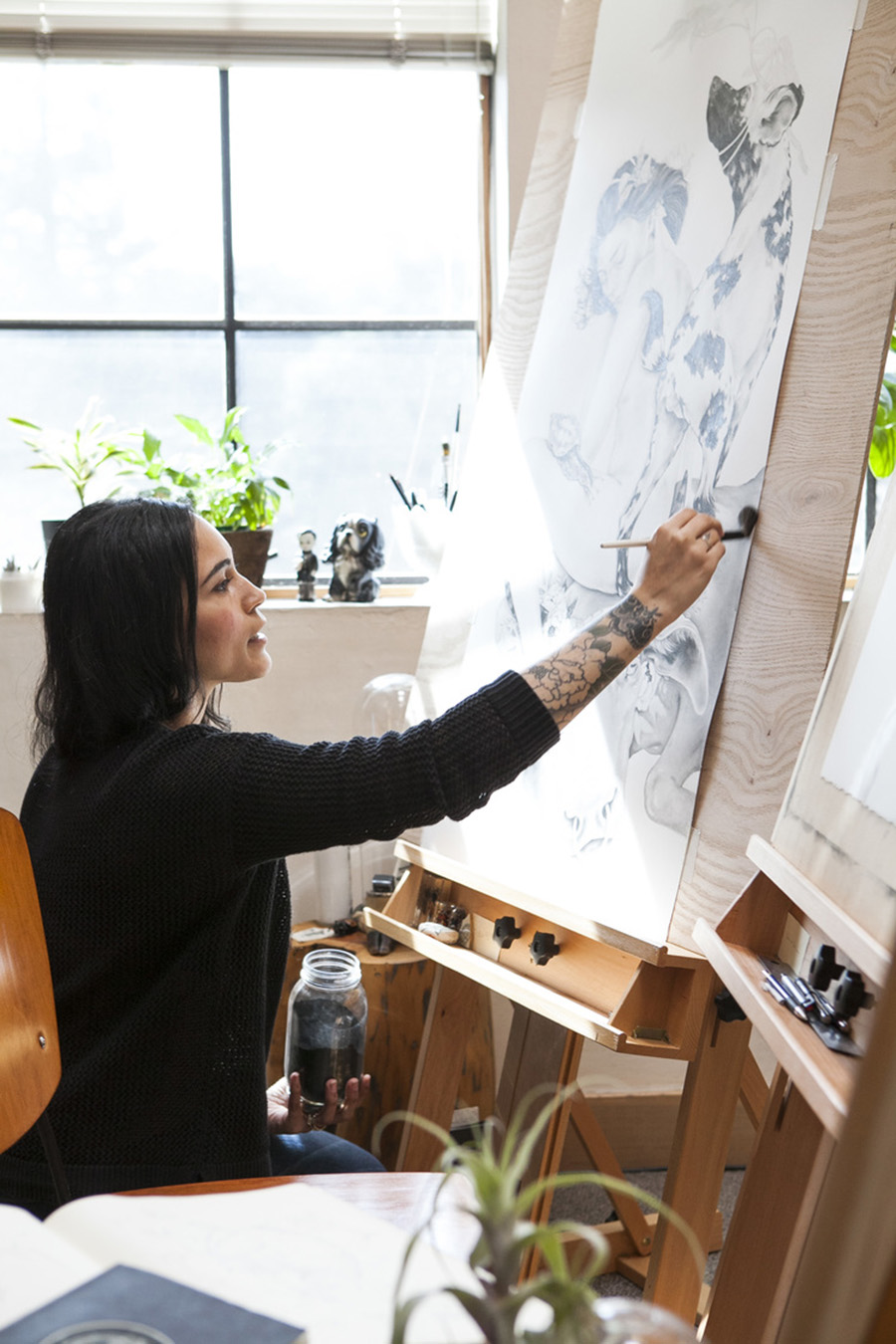
What’s your favorite reference book in your collection?
Nicomi Nix Turner: In terms of reference, it is a bit obscure but Franz Kafka’s Metamorphosis pulls at my creative cords and gets me thinking about all sorts of sensations: loss, faith, family, abandonment, terror, acceptance. Literature is more poignant to me in the studio because it can send me into more channels than music or images.
How have you been able to turn your drawing skills to a full time profession?
Nicomi Nix Turner: I started out working as an illustrator for Emily the Strange when I was 19. I was quickly submerged into the pleasures/business of the art world and of the realization that I needed to push myself further every day for anything to really matter. After leaving Emily, I have not left that notion behind me. I have a really unhealthy work ethic but it works for me I just—just keep going.
At the end of the day I don’t really know how I have been able to do this but I’m so thankful.
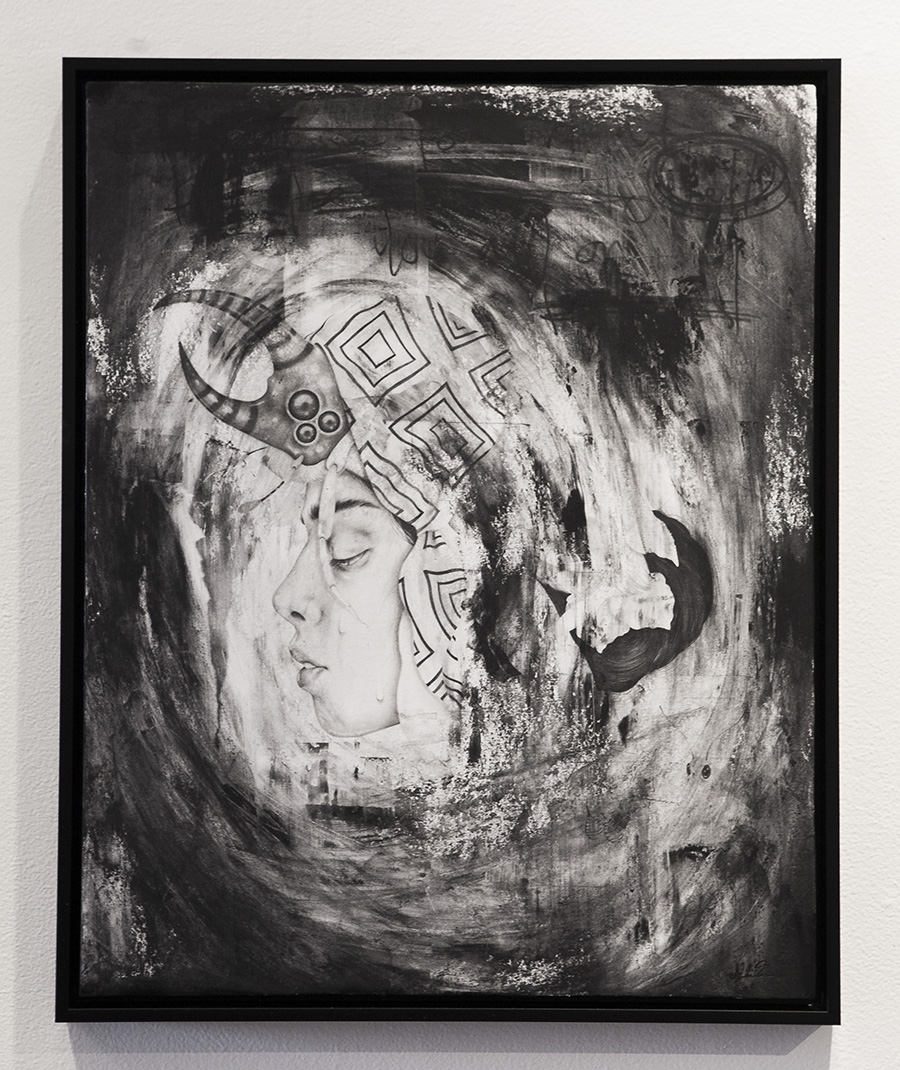
Rebecca Morgan
Brock Brake: Focusing on the imperfections of the female figure instead of beautifying her is a departure from most representations of the female form in art. Can you talk about your intentions when representing the female form? What do you hope your audience takes away?
Rebecca Morgan: There is the expression in art: Paint or make what you know. I’m a woman navigating life and making art in the world which definitely is the inseparable foundation for my art making. I think that making honest, and sometimes guttural, images of my experience as an individual and woman in the world is relatable to others; the response that I get is usually people—both male and female—being like, “I know that feeling! That is me.” There is so much daily turmoil both in the world and internally; I think it is especially exhausting to be a woman in the world—socio-political, societal expectations, stereotypes, and patriarchal oppression are felt on a daily basis. To offer some sort of repose or lightness—identifying the insanity, insecurities, and personal daily frenetic froth is a big deal for me; for others to feel like they can relate or that their human experience is shared is a big deal to me. To make others feel good or laugh is one of the greatest responses I could elicit from an audience, offering repose from all the daily nuttiness out there.
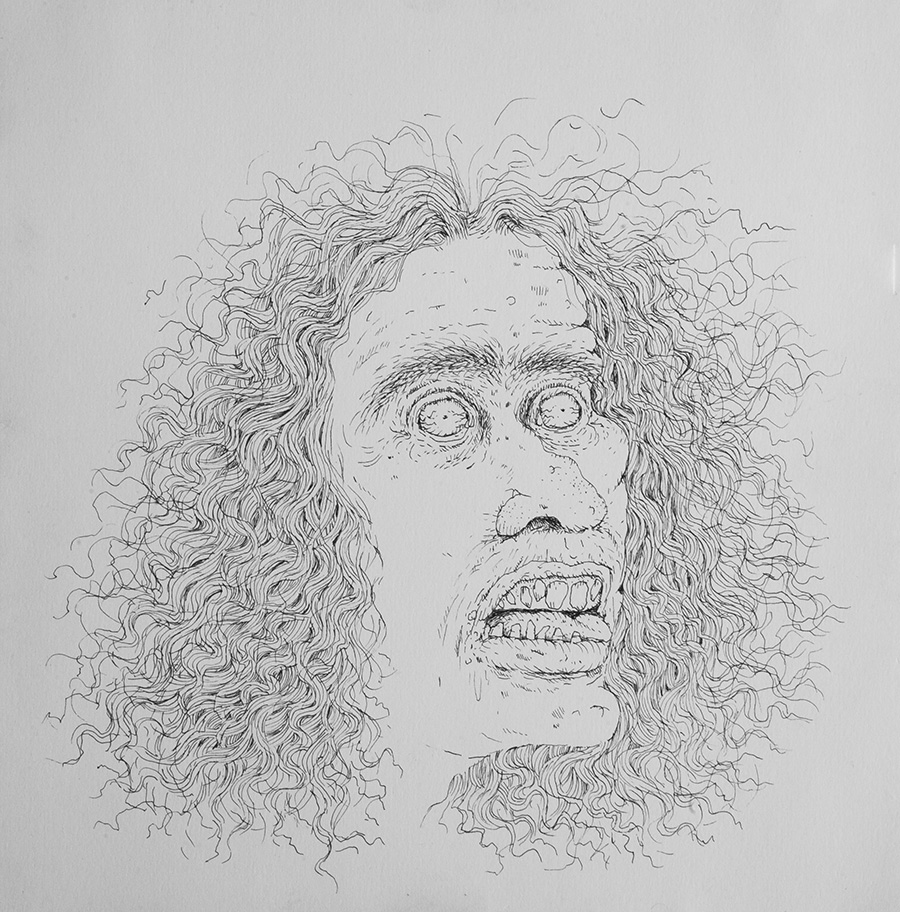
The female figures in my work represent a kind of blissful ignorance: they’re totally fine with looking so hideous and awful, covered in acne, wrinkles, and blemishes. Their confidence and contentment is the ultimate acceptance of self love—it’s of no consequence to them. In my mind, that empowers them; they are hardcore, boss women who are doing their thing… I see the women that I make as reflections of this powerful reclamation. I use myself as a diaristic model; even when the cartoons or figures are not out rightly me, they represent a veiled self-portrait… Illustrating intimate scenes and scenarios of life lets me reclaim power and ownership of hard times and weird emotions. Humor is cathartic for me. Embracing the discomfort, flaws and oddity is a way to turn it into lightness.
You have a unique illustrative style. How do you come up with your characters and what is the process like from inception to completion?
Rebecca Morgan: A lot of times I just start with creating a face or portrait. I loosely sketch the shapes and features and work it out it organically. Sometimes I have a very specific image to make and other times I just sit down and see what it becomes. Often I will start with something and it turns into something or someone very different and that’s alright too. It’s important not to treat things preciously or be prepared to make changes when a problem occurs, which it inevitably does. I collect source material from everywhere—a lot from social media—faces that I see or scenarios and sometimes I will use them as starting points… I’m always taking pictures, screenshotting, and compiling images.
Over the years the look of the characters have changed quite a bit and in many ways have remained the same; they have evolved and gotten formally better as I have gotten better over the years. I love drawing faces, people in scenarios, expressions that could be interpreted in many ways. I am endlessly fascinated by humans; the body is so potent as a vessel to convey all kinds of narratives. This is why I am a figurative artist.
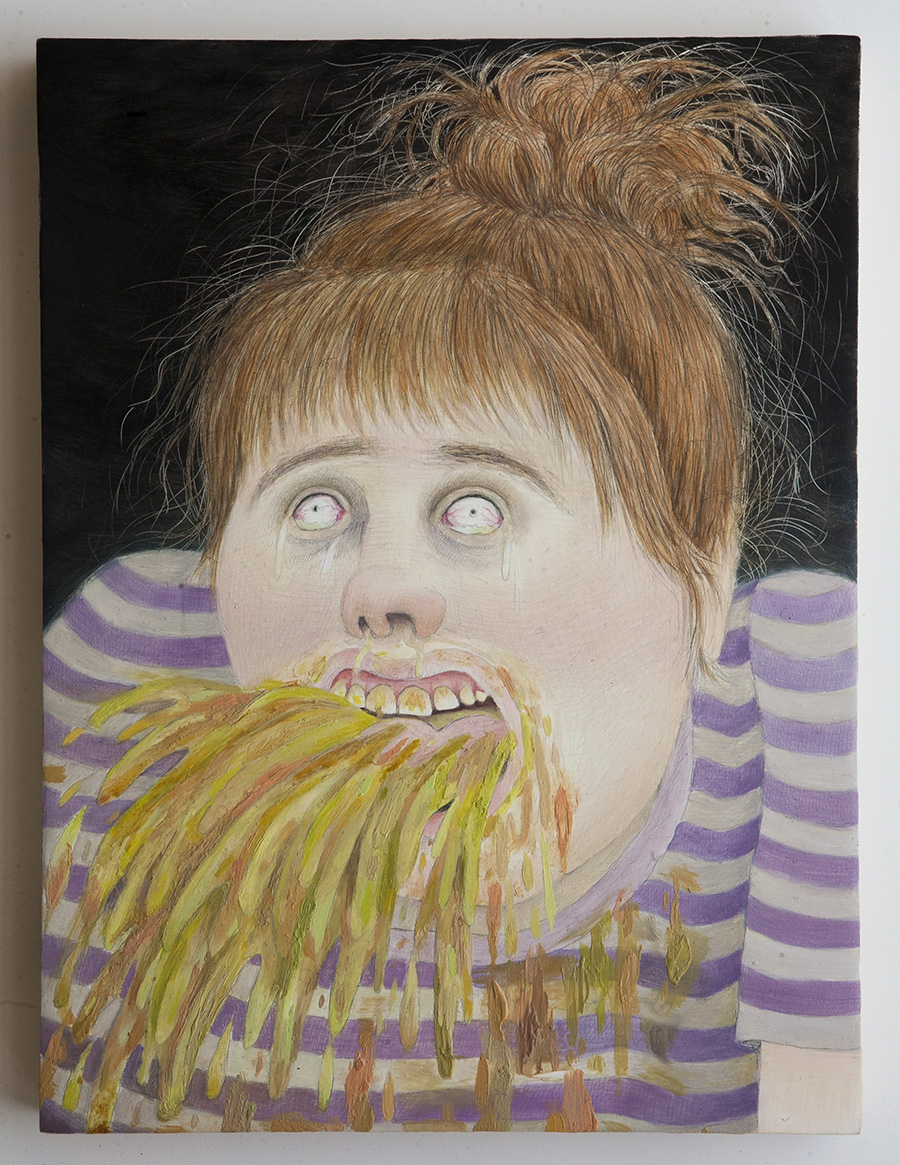
Winnie Truong
Brock Brake: You’ve been traveling a lot and taking part in a lot of artists residencies around the world. As a creative, how does this influence the work you make?
Winnie Truong: I’ve been working out of my studio based in Toronto since 2010, and while Toronto is a truly great city for creative to live and work in, it has its limitations. Artist residencies have been a way for me to subsidize, and give purpose to traveling outside of Toronto and abroad. It’s had a significant influence on my work this year and just by virtue of forcing me to pack light, my way of working has had adapt to this atmosphere of mobility and flux. I’ve been working full-time in the studio since 2013—I think it’s been very helpful to take on something outside of my usual routine and outside of comfort overall. It’s led me to developing paper cut drawings and animations this past year and it’s been quite a ride.
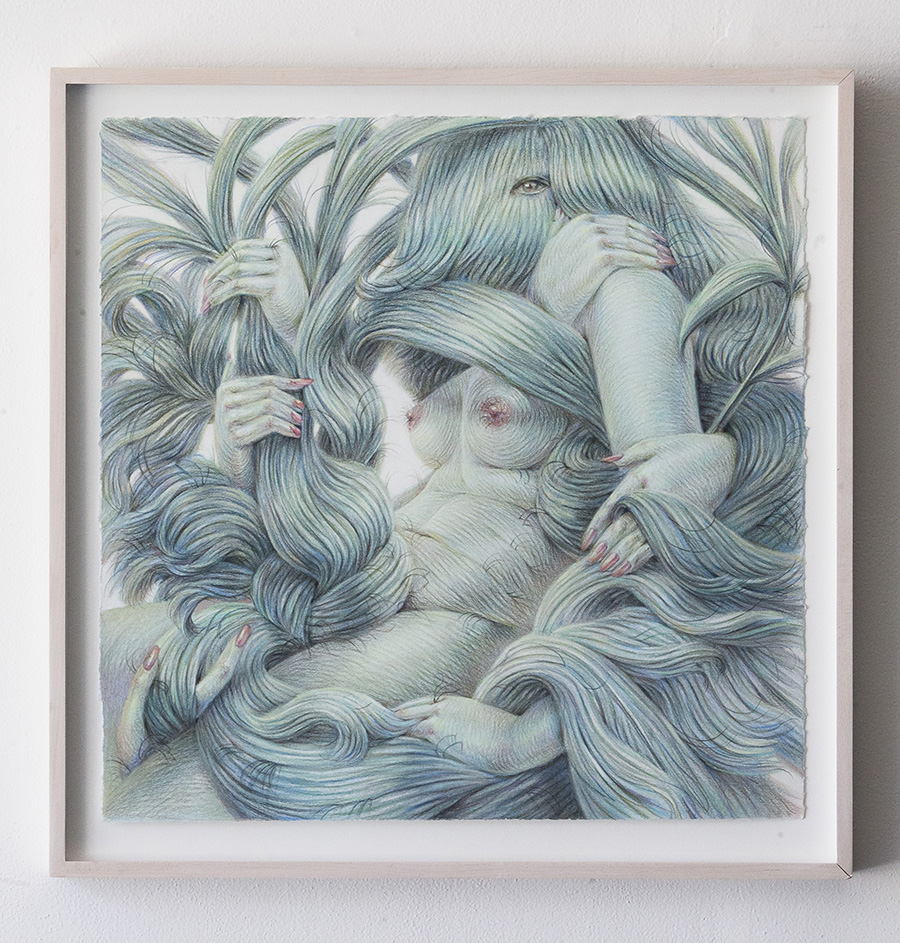
Colorful, enormously long, full lengths of hair is a big thing in your work. We have to know not only the why by how. What is it about hair, what’s the message? And how do you render it; what is the process?
Winnie Truong: It’s been a recurring motif in my work and is subject that continues to fascinate me. Hair is that natural part of us that can be modeled to perform everything from era, gender, to subculture. For me, it’s been a malleable subject with so much to give. I’ve been able to approach it in my drawings over the years through different lenses; whether examining the tensions between beautiful and abject or with hair as a symbol of transgression in feminist conversations, the end remains to be seen. Hair is also fun to draw... It’s a labour intensive but meditative activity for me in the studio.
What three words would you use to describe your work?
Winnie Truong: Creepy, sensual, feminine.
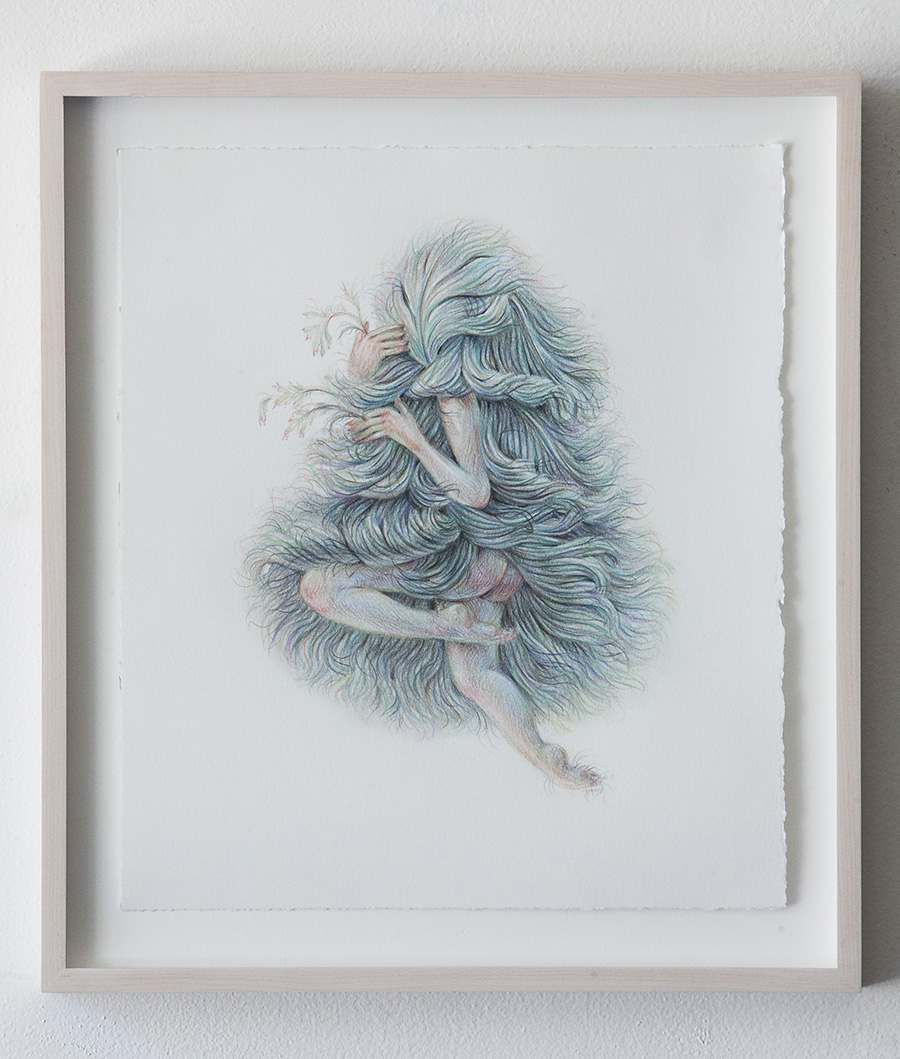
***
The artists with work at the 4% show are as follows: Alexandra Levasseur, Andrea Wan, Angela Fox, Anne Harris, Beryl Fine, Erin Riley, Hanna Yata, Ileana Tejada, Kate Klingbeil, Kit King, Lauren YS, Marina Capdevila, Meryl Pataky, Nicomi Nix Turner, Noel Morical, Rebecca Morgan, Sheryo, Stacey Rozich, Winnie Truong

